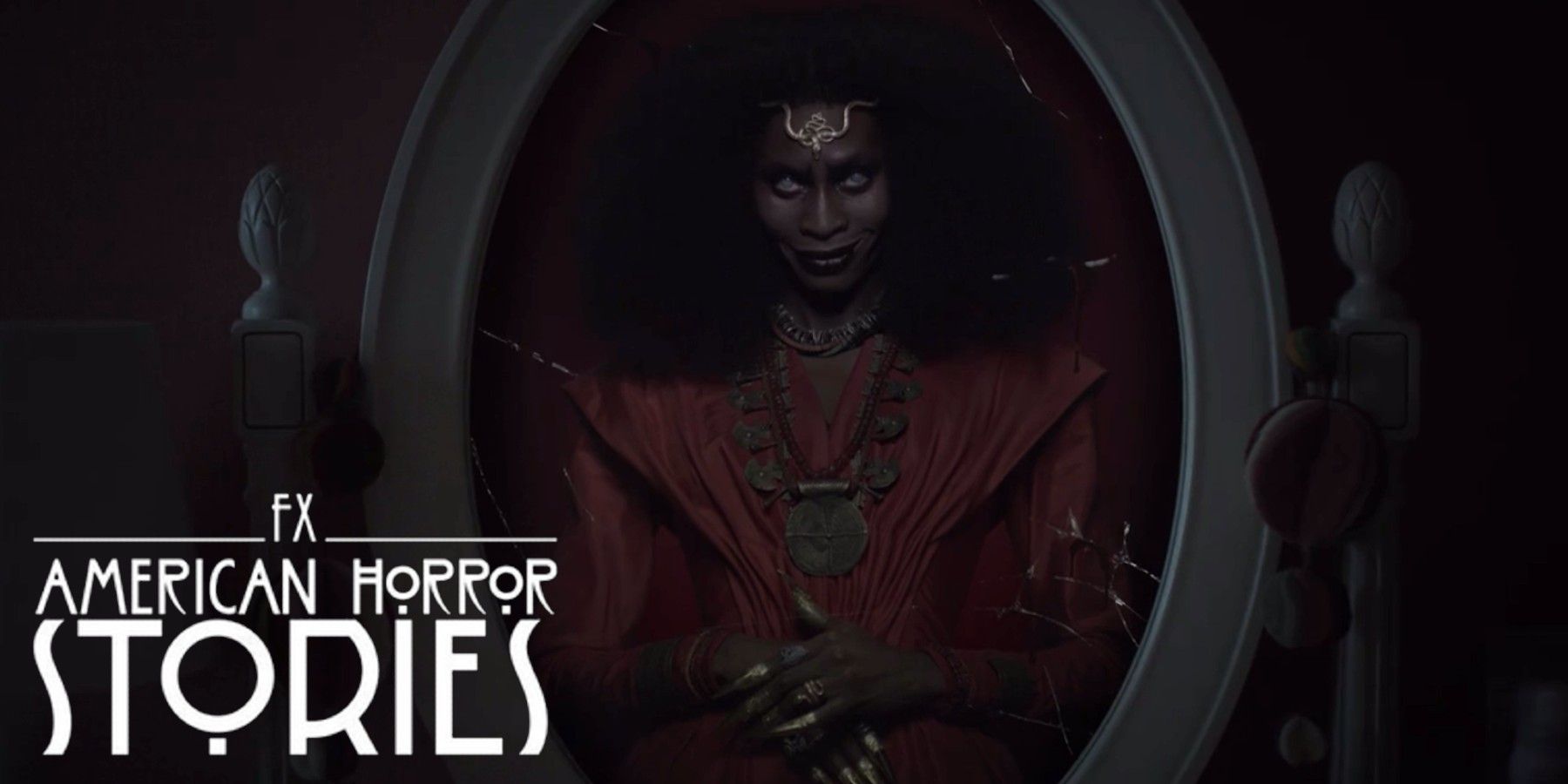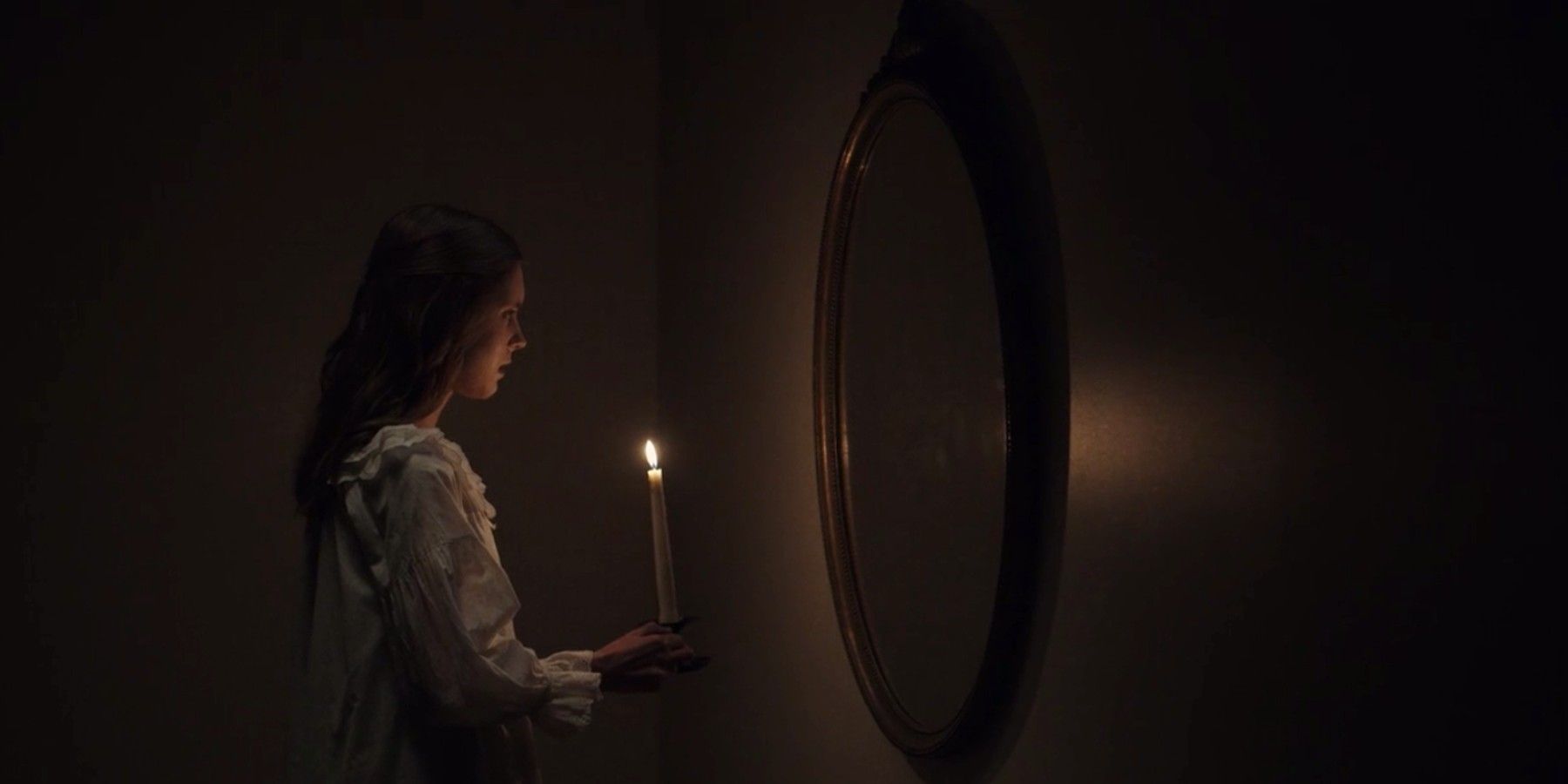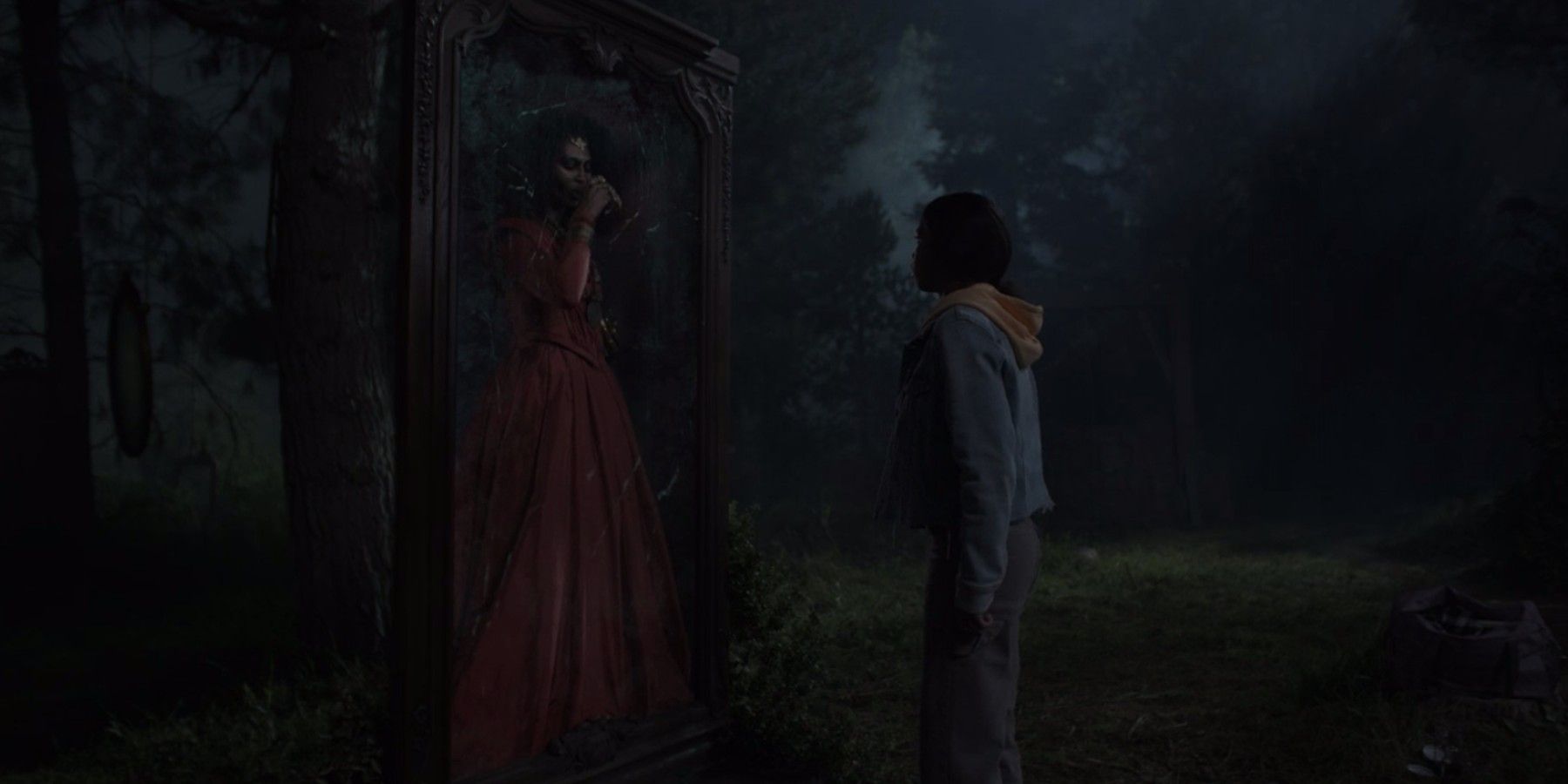The legend of Bloody Mary lives on in the newest episode of American Horror Stories. The spin-off horror series' latest episode calls upon the notorious horror figure and puts a group of four friends in treacherous waters. As always, the horror series delivers one final twist that aims to throw the viewers on their heads. Those in "Bloody Mary" are surprising, though they aren't the best the horror series has to offer.
As the title suggests, "Bloody Mary" revolves around the legend where one stands in front of a mirror with a lit candle, and chants her name three times. American Horror Stories maintains this elementary level of her story but alters the nature of the reputable figure. SJ Main Muñoz, the director of "Bloody Mary," does well to create as suspenseful of an atmosphere as it can give, though Angela L. Harvey's script could have benefited from a more riveting atmosphere.
"Bloody Mary" begins with a group of four: Lena (Kyanna Simone), Maggie (Kyla Drew), Elise (Raven Scott), and her younger sister Bianca (Quvenzhané Wallis), preparing to call upon Bloody Mary (Dominique Jackson). Lena leads the group, telling them of Mary's abilities to tell the girls about their futures. Bianca is the most reluctant but is guilted into partaking in the activity by her older sister. Individually, the girls summon Mary. While the girls are told that their deepest desires can come true, they must each make a horrible sacrifice in order for them to achieve them. In order to make cheer captain, Lena must drop Anna from the pyramid, paralyzing her; in order to get her boyfriend back, Maggie must leak his new girlfriend's private photos; to get into Yale, Bianca must accuse her counselor of assault. Elise has a much more cryptic line of work, though it is made clear early on, that she must also hurt someone to make her wishes come true.
"Bloody Mary" commences with the twists early on, as the girls discover that Lena conveniently forgot to tell them that Bloody Mary may kill them if they fail to abide by her guidance. Individually, the girls struggle to make a decision of whether they should actually enact Mary's sinister advice. In an effort to overcome their new connection to the sinister spirit, Elise tasks herself with researching the legend. A discovery leads her to make a connection to a woman that was accused of witchcraft, who actually operated a "reverse Underground Railroad." Things continue to take a detrimental turn for the girls, as they begin to see Mary more frequently and some of them begin to fall victim to her scheme.
"Bloody Mary" has solid pacing that progresses the story gradually. None of it feels rushed and even with Elise's concealed motive, "Bloody Mary" manages to stay on track. In itself, the episode is concise and delivers twists that are meant to be significant. From the discovery of what Mary tasked Elise with, to Mary's origin story, and the end result, "Bloody Mary" is filled with twists and turns. Unfortunately, after seeing the highs that American Horror Stories is capable of, "Bloody Mary" falls a bit flat. By using the legend of Bloody Mary, American Horror Stories does itself a small disservice by not creating an original story, which has proven to work well for the series in the past. However, they do make it their own.
Where "Bloody Mary" lacks isn't in its originality but in its suspense. It's difficult to connect with the girls' own fears that death could befall them at any moment should they fail to enact what Mary has given them. It isn't hard for the audience to sympathize with their case and root for each of them to find a way out of it, but the connection with the characters is difficult to form. Within these shortened, independent horror stories, it can be a challenge to create a solid connection between its characters and the audience. "Bloody Mary" attempts to make it possible through the characters' experiences, their fears, and their desires, but it doesn't hit the mark entirely.
Perhaps the easiest character to connect with is Mary, which is a startling realization in itself. This is largely due to the performance Jackson delivers as Mary. In the episode's final act, Jackson is striking not only as the spirit within the mirror but compelling in delivering a glimpse into the backstory that molded her into the horror figure. The use of the powers Mami Wata bestowed upon her, and the desperation tethered to her act creates a side to her character that makes her sympathetic. This is ultimately short-lived, as viewers are then forced to realize the misleading nature of Mary's intentions and how crippling those have been to each of the characters.
In dealing with the Bloody Mary legend, American Horror Stories does tap into a quality that is often the root of many horror stories: true nature. "Bloody Mary" ponders how far people are willing to go in order to achieve their own desires. American Horror Stories suggests that perhaps everyone has dark desires and only needs to be given the right motive to enact them and potentially mistreat those that could have helped them achieve their goals the right way. The true horror of "Bloody Mary" isn't the sinister spirits, but the lengths of the human desire to achieve greatness at someone else's downfall.
American Horror Stories is now streaming on Hulu.



